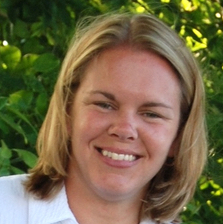Earlier this year, Universal Studios remade the Dr. Seuss tale, The Lorax - arguably one of the best picture books for children about sustainability. The film was a box office success, but soon a saturated marketing campaign, often with corporate partners that promoted some very unsustainable products, caused many to cry foul. Despite that, HP's Jeff Walter, Manager of IPG Environmental Sustainability, took the stage at Sustainable Brands 2012 to explain why HP's Lorax campaign was appropriate, sustainable and very successful.
Walter explained that the idea of individuals taking action to effect change was one that HP wanted to bring to its message to combat the feeling of many that they can't, by themselves, make a difference. “UNLESS someone like you cares a whole awful lot, nothing is going to get better. It’s not.” (Dr. Seuss, The Lorax) More than 70 million people have seen the film, and HP wanted to take advantage of the feeling people were leaving the theater with - to make a change.
HP has a long history of sustainability, but is always looking for more ways to help customers use their products more sustainably (incorporating auto on/off printer functions). Walter conceded that printing is a serious emissions culprit, saying, "The use of our products generates a significant portion of the environmental footprint." However, no matter how much internal change HP institutes (solar panels on manufacturing facilities), printing behavior is controlled by customers, so to make a significant impact, engaging customers is crucial.
The argument could be made that the best thing to do is not to print at all. HP decided to try it. They conducted a test to see if people could do without printed material for one week, so the company set out to take it all away. Then came the realization of just what a sacrifice this was for employees. It's not just business materials that are made of paper, but packaging, greeting cards, signage, textbooks, photo albums and notes on the fridge, to name a few. Walter reported that the test participants lasted an average of six hours before protesting the lack of printed material and quitting the experiment.
There were also printed forms that could not be taken away, such as prescription labels, school worksheets, etc. For now, printing is ingrained into our lifestyle in some form or another. So HP decided that a campaign about printing more sustainably was warranted.
HP's message contains three main pillars:
- recycle print cartridges
- use recycled/sustainably-sourced paper
- invest in energy-efficient printers and products
HP takes back any and all HP print cartridges through any Office Max, Staples or Walmart store. They then shred them and add them to water bottles (to the tune of one million bottles per day) and upcycle them into new cartridges. HP has created more than one billion new cartridges this way, but Walter says the biggest obstacle is that HP doesn't receive enough cartridges back.
Just as people are tracing the journey their food makes from farm to table, Walter believes that people should be more concerned about where there paper comes from. Using sustainable sourced paper and recycling it can lessen printing's impact.
Third, of course, HP has a long list of environmentally-friendly printers and products consumers can buy that will also contribute to a more sustainable printing experience. In addition, HP has a comprehensive take-back program where consumers can either sell equipment that still has value to the company, or simply recycle equipment at the end of its life.
Did people listen? Walter says that traffic to the site increased tremendously after the film's release, and click-through rates were 50 percent higher than other campaigns, meaning that people were engaged by the content and were staying to learn. Walter said that the campaign sparked a great conversation from a PR and social media perspective, resulting in a 90 percent neutral/positive favorability and only a 10 percent negative reaction, and more than 700,000 Facebook fans. HP worked with Scholastic to create classroom lesson plans that were very well-received by teachers. In her SB12 coverage, Jen Boynton also pointed out the importance for big brands to engage children.
- 94 percent of teachers surveyed integrated the program into their lesson plans
- 87 percent of teachers surveyed found the InSchool program to be useful
- 93 percent of teachers surveyed said they would like more programs like this in the future.
Despite all the uproar about Lorax marketing, Walter was pleased with the impact of their Lorax program. In the end, he said, HP thought it was worth the risk of people believing that HP was exploiting The Lorax in order to reach that number of people with their sustainable printing message.

Andrea Newell has more than ten years of experience designing, developing and writing ERP e-learning materials for large corporations in several industries. She was a consultant for PricewaterhouseCoopers and a contract consultant for companies like IBM, BP, Marathon Oil, Pfizer, and Steelcase, among others. She is a writer and former editor at TriplePundit and a social media blog fellow at The Story of Stuff Project. She has contributed to In Good Company (Vault's CSR blog), Evolved Employer, The Glass Hammer, EcoLocalizer and CSRwire. She is a volunteer at the West Michigan Environmental Action Council and lives in Grand Rapids, Michigan. You can reach her at andrea.g.newell@gmail.com and @anewell3p on Twitter.














